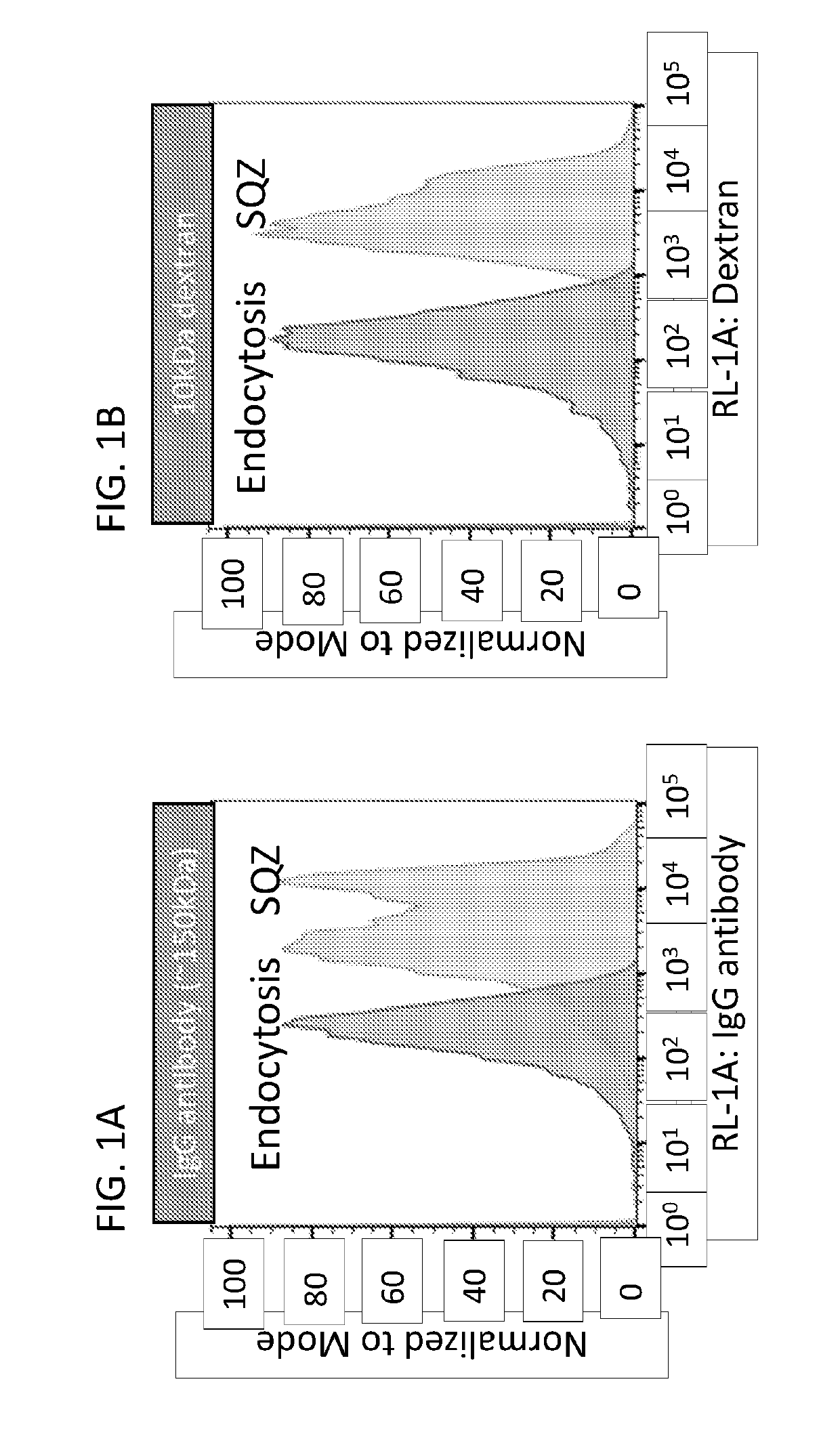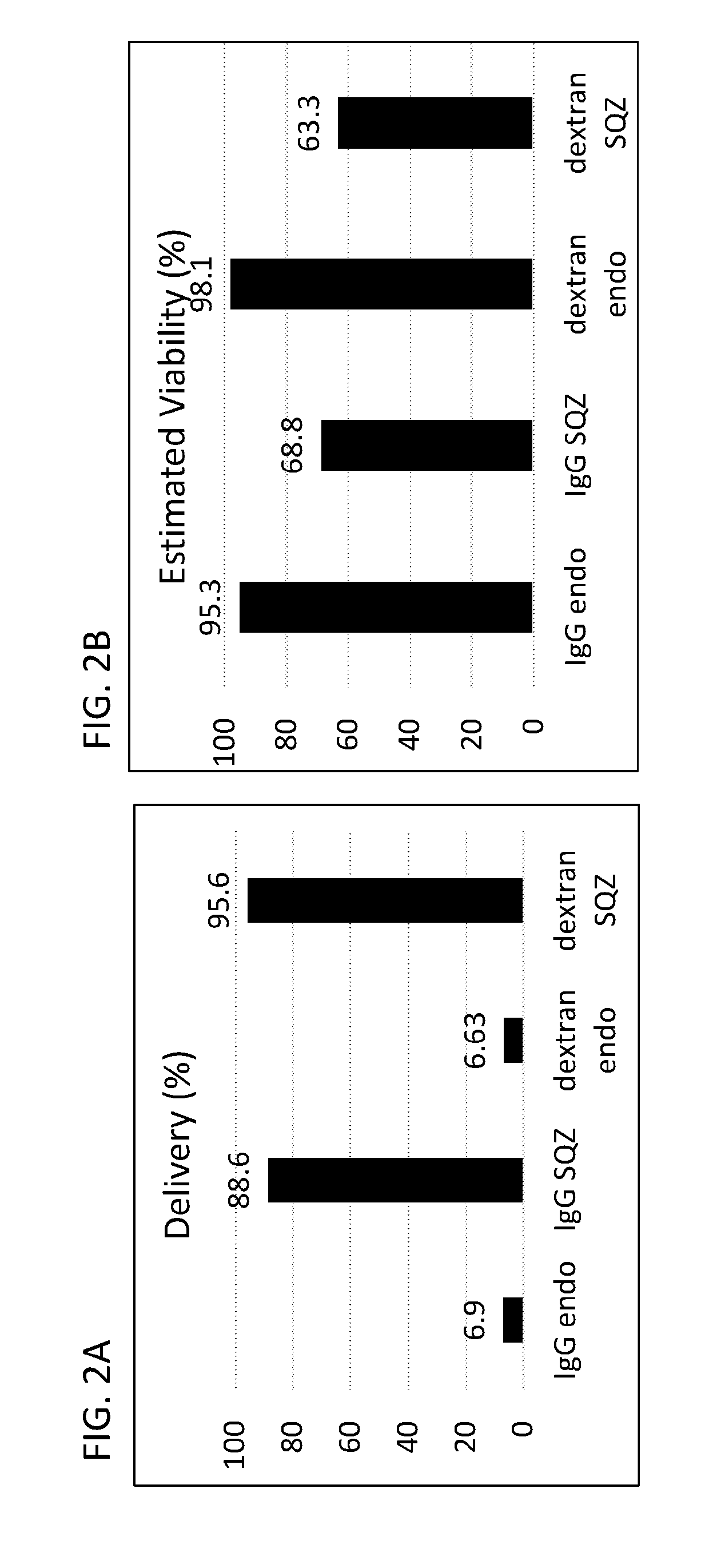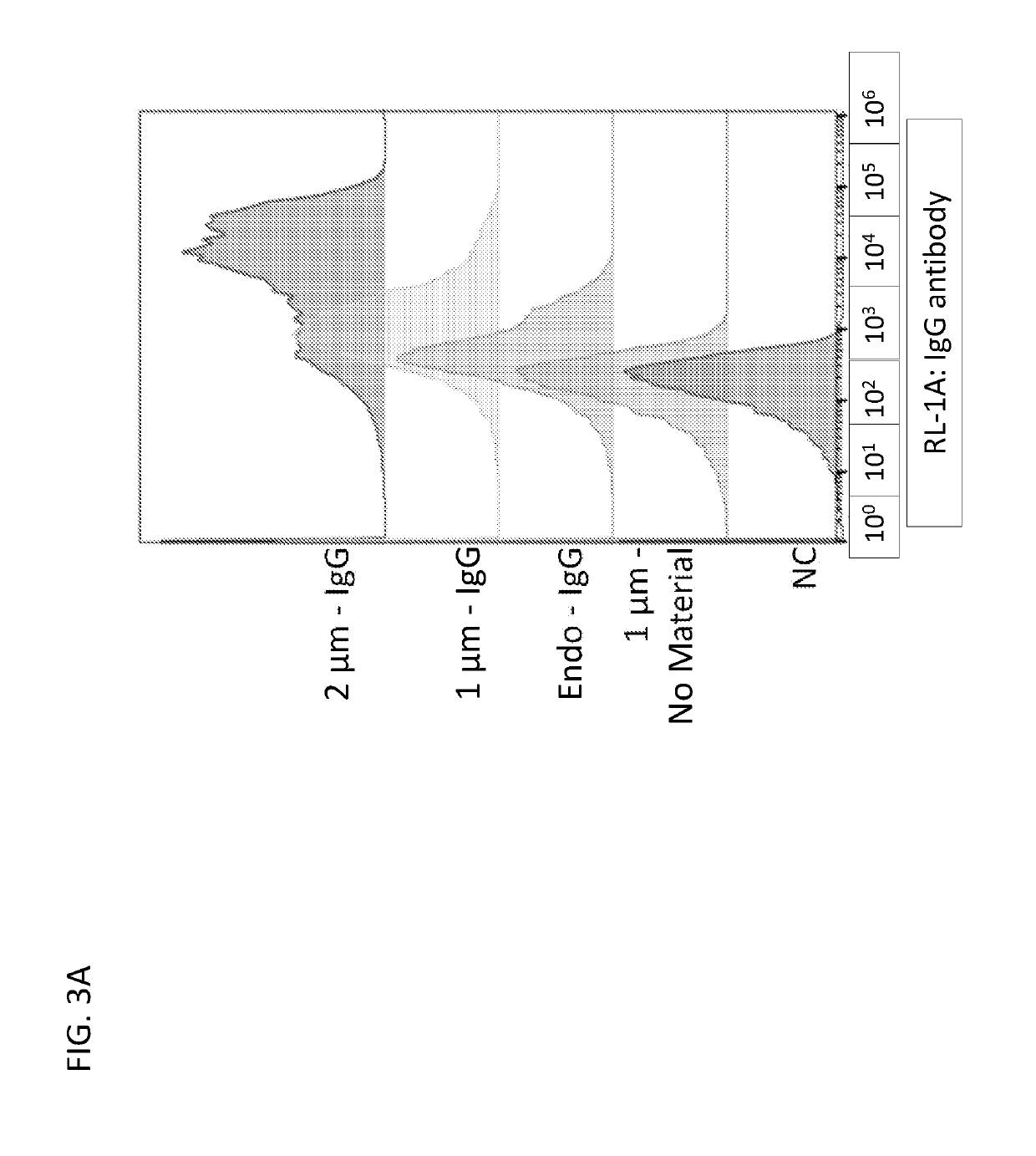Intracellular delivery of biomolecules to induce tolerance
a biomolecule and intracellular technology, applied in the direction of carrier-bound antigen/hapten ingredients, immunological disorders, antibody medical ingredients, etc., can solve the problems of inability to use standard transfection techniques, inability to use chemically modified antigens for attachment, and difficulty in manipulating red blood cells to associate antigenic materials. , to achieve the effect of increasing reducing the half-life of the anucleate cell
- Summary
- Abstract
- Description
- Claims
- Application Information
AI Technical Summary
Benefits of technology
Problems solved by technology
Method used
Image
Examples
embodiment 1
[0147]A method for suppressing an immune response in an individual, the method comprising:
a. passing a cell suspension comprising an anucleate cell through a constriction, wherein said constriction deforms the cell thereby causing a perturbation of the cell such that an antigen enters the anucleate cell; and
b. introducing the anucleate cell into the individual.
wherein said antigen is processed in a tolerogenic environment, wherein presentation of said antigen in said tolerogenic environment suppresses an immune response to the antigen.
embodiment 2
[0148]A method for suppressing an immune response in an individual, the method comprising:
a. passing a cell suspension comprising an anucleate cell through a constriction, wherein said constriction deforms the cell thereby causing a perturbation of the cell such that a tolerogenic factor enters the anucleate cell; and
b. introducing the anucleate cell into the individual,
wherein said tolerogenic factor contributes to a tolerogenic environment that suppresses an immune response.
embodiment 3
[0149]A method for suppressing an immune response in an individual, the method comprising:
a. passing a cell suspension comprising an anucleate cell through a constriction, wherein said constriction deforms the cell thereby causing a perturbation of the cell such that an antigen and a tolerogenic factor enters the anucleate cell; and
b. introducing the anucleate cell into the individual,
wherein said antigen is processed in a tolerogenic environment, and wherein presentation of said antigen in said tolerogenic environment suppresses an immune response to the antigen.
PUM
| Property | Measurement | Unit |
|---|---|---|
| constriction width | aaaaa | aaaaa |
| pore size | aaaaa | aaaaa |
| pore size | aaaaa | aaaaa |
Abstract
Description
Claims
Application Information
 Login to View More
Login to View More - R&D
- Intellectual Property
- Life Sciences
- Materials
- Tech Scout
- Unparalleled Data Quality
- Higher Quality Content
- 60% Fewer Hallucinations
Browse by: Latest US Patents, China's latest patents, Technical Efficacy Thesaurus, Application Domain, Technology Topic, Popular Technical Reports.
© 2025 PatSnap. All rights reserved.Legal|Privacy policy|Modern Slavery Act Transparency Statement|Sitemap|About US| Contact US: help@patsnap.com



